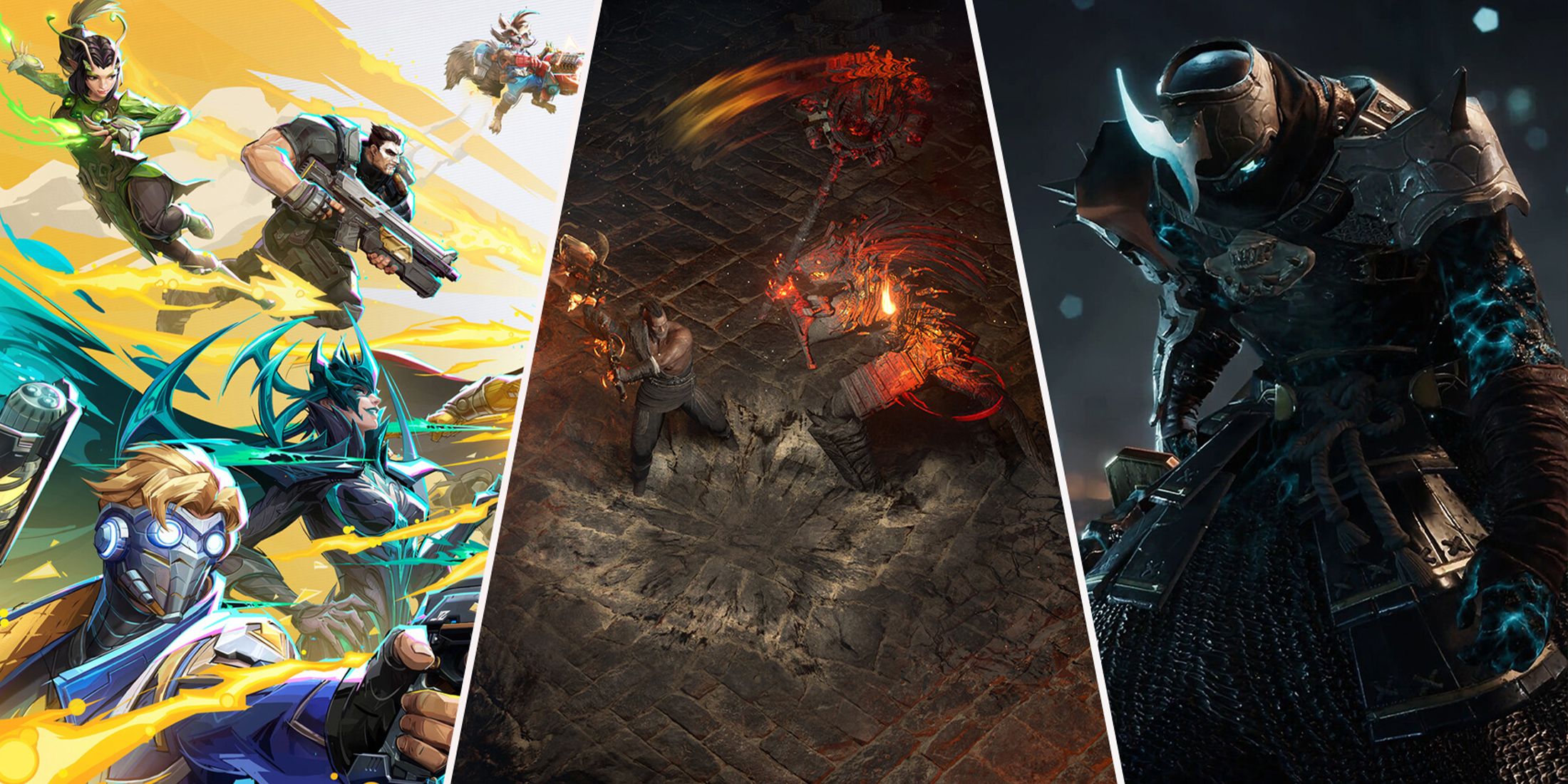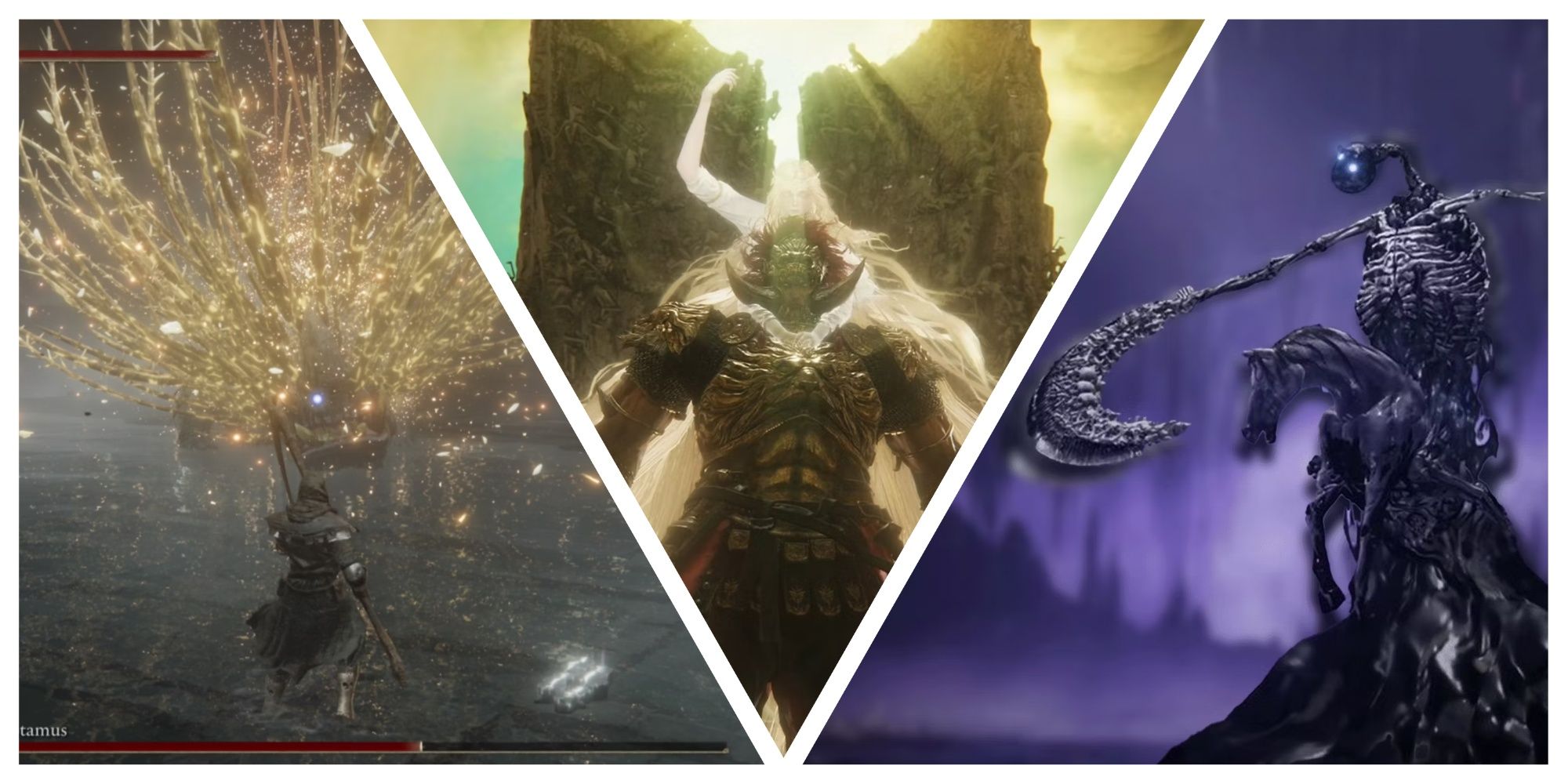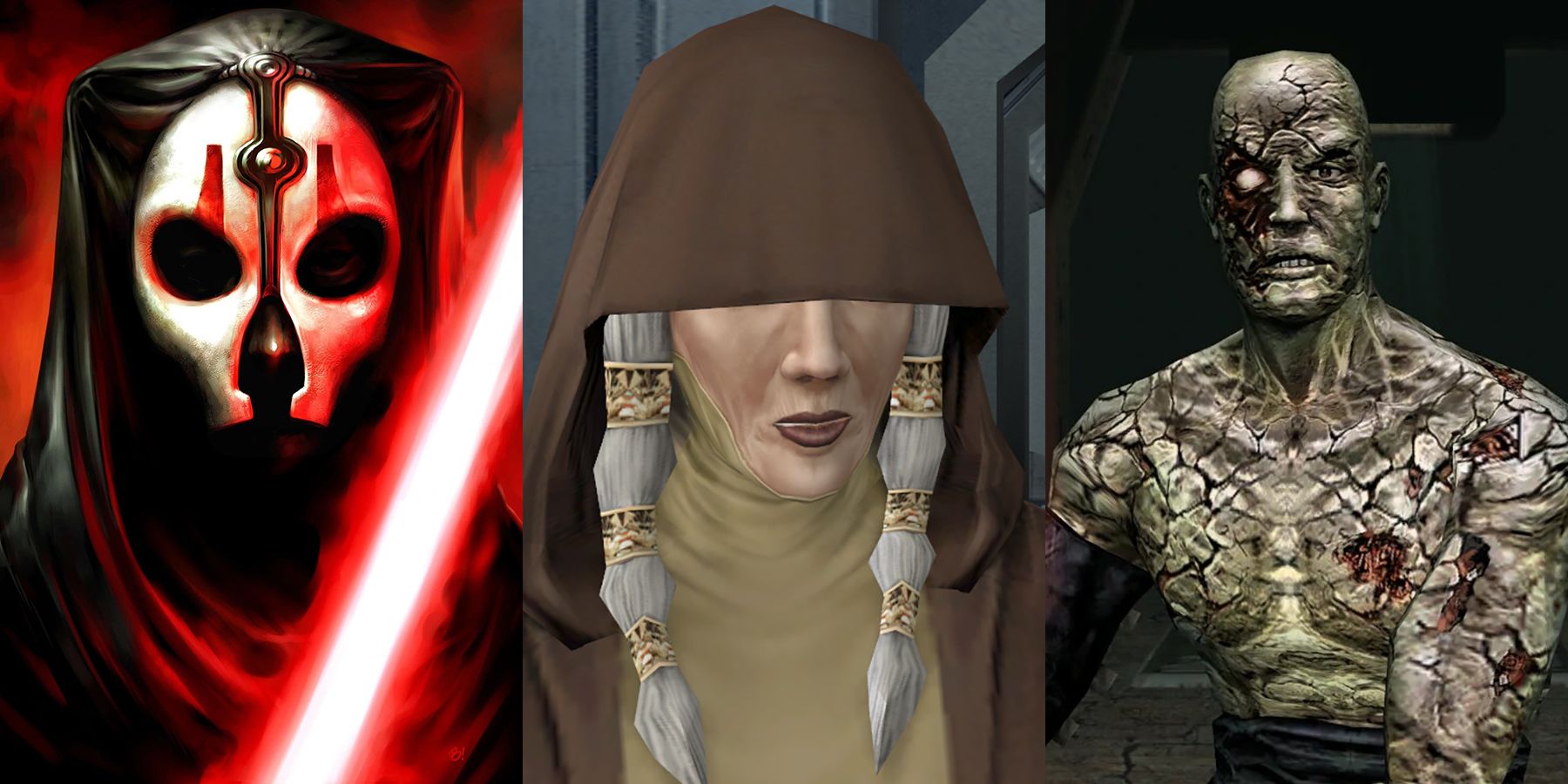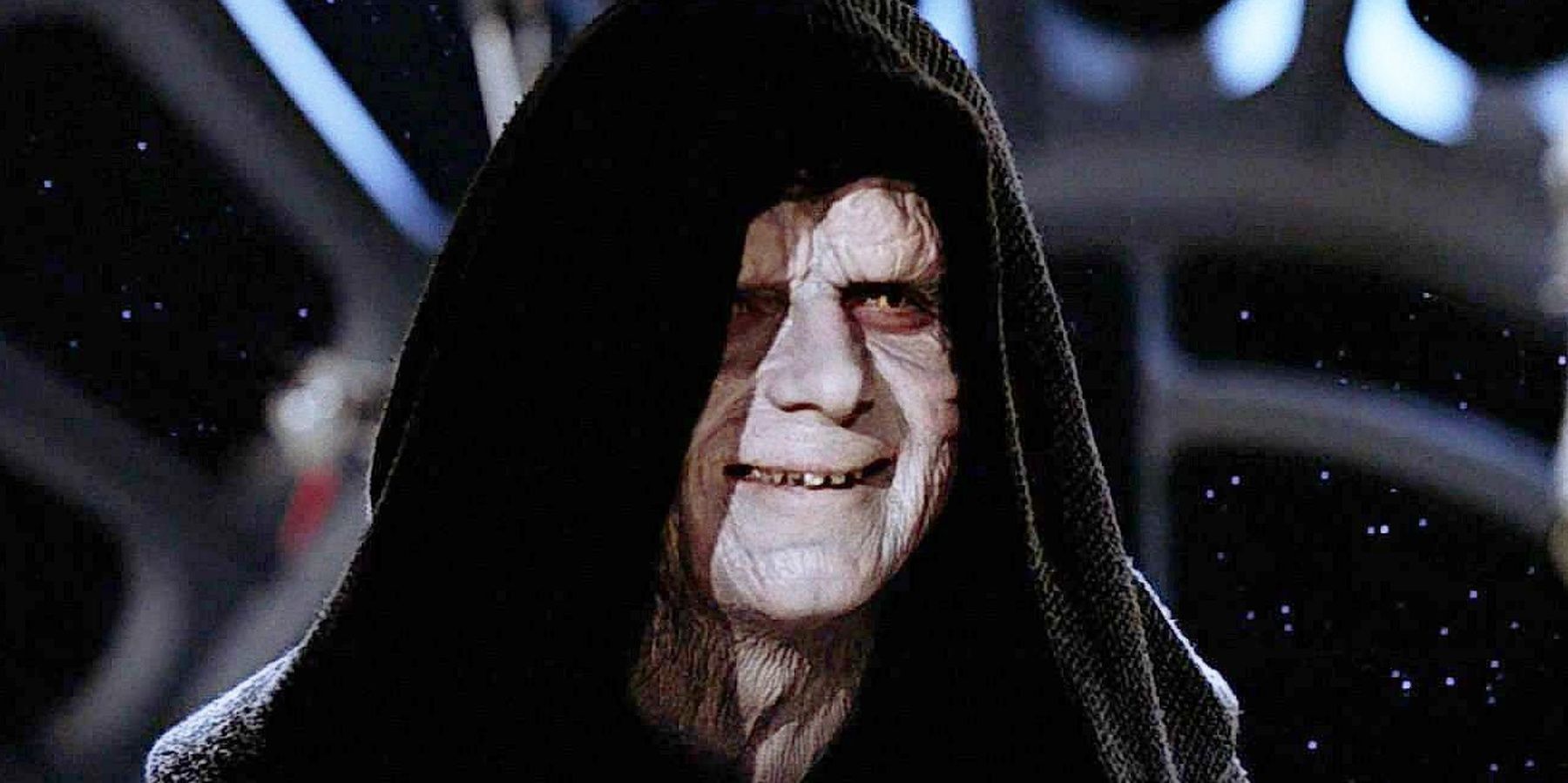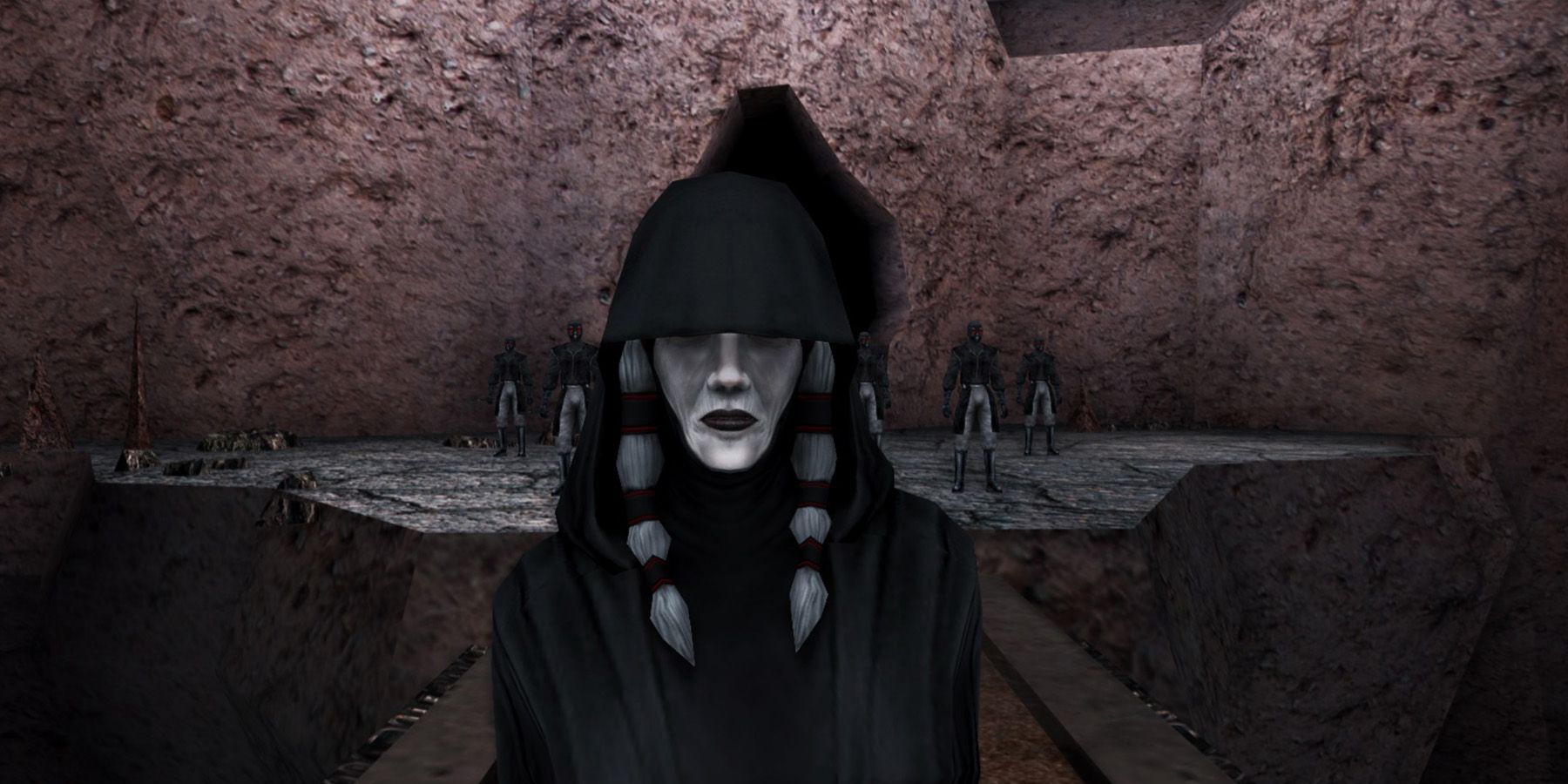If there is one advantage that the Star Wars: Knights of the Old Republic games have over the Skywalker Saga movies, it’s imagination. Knights of the Old Republic pushed the possibilities of the Force perhaps more than any other entry in the franchise. After all, it was the first to explore what it meant to be cut off from the Force (something that Luke Skywalker sort of underwent in The Last Jedi).
But this is true of its iterations of the Sith too. While the Rule of Two’s origins aren’t hard canon anymore, it is mentioned in the movies and Clone Wars. It essentially means there can only ever be two Sith Lords—the Master and the Apprentice—one who has power, the other who craves it. This rule has always been more like guidelines, and it can be sort of hard to follow, but Palpatine and Maul, Palpatine and Dooku, Palpatine and Vader, and so on resemble this rule in the first two trilogies.
The enemies of the Sequel Trilogy aren’t exactly Sith, but when it comes down to it, it’s easy to see why casual fans would assume that Snoke or Kylo Ren were Sith Lords. That’s because, unlike KOTOR, the movies tend to put all the Sith under that one emphasis: power. That’s all Palpatine wants. That’s what Vader originally wanted. That’s what the First Order wanted, and with no real established origin in the main canon, it makes it even harder to understand. However, the Sith Triumvirate really captures what it means to be a Sith in KOTOR 2.
The Sith in the KOTOR Era, Skywalker Saga
It should be noted that Darth Bane is canon, per his appearance in the Clone Wars, but a lot of his history is questionable. In short, Darth Bane was the first Sith Lord to begin the Rule of Two after the Brotherhood of Darkness essentially imploded, crudely 1000 years before The Skywalker Saga. There were so many Sith Lords that their pursuit of power would often result in infighting, instead of fighting the Jedi. This is not unlike the Sith Lords who existed prior to the KOTOR games on the timeline, but their reasons were more varied.
Yes, Sith Lords wanted power. Yes, some Sith Lords want an empire to rule the galaxy, but no, not all Sith Lords should fall into this reductivism. That’s why the Sith Triumvirate better reflects the Dark Side than the Rule of Two. The Rule of Two was only about power. The Sith Triumvirate was about how the Sith obtained power.
The Sith Triumvirate vs. The Rule of Two
Kreia, also known as Darth Traya, was the Lord of Betrayal, for example, and Betrayal would be her downfall. It is what pushed her and enabled her throughout KOTOR 2’s story. She sought to sever the universe from the Force, as she and the Jedi Exile had come to know what it was like to detach from the Force, and saw it as a push for freedom away from its influence. She hated it, hated how it controls every single being’s destiny, and thus her story was about hatred, betrayal, and many more elements—all obtainable with enough power, but not just about power.
Darth Sion was the Lord of Pain, and likewise, wanted to spread his pain and suffering across the galaxy. Specifically, it was against the Jedi, but it was against everyone as his hatred and pain kept him alive through the Force. It wasn’t until the Jedi Exile either absolved him of his pain or hatred or proved theirs was stronger, ultimately, that he could die. Indeed, this story is not unlike Darth Vader’s—it is a tragedy of pain and suffering, but the Rule of Two limits that purview to the pursuit of power to escape it (which fails both Vader and Sion anyway).
Now, Darth Nihilus was the lord of Hunger who consumed the Force and living life. Before his body became a ghost-like entity and Wound in the Force, Nihilus did crave Power. It Sith’s ways after all. However, it wasn’t just power for power’s sake. It wasn’t just to rule or limit to the purview of a Master having power and an Apprentice wanting it—Nihilus believed death was the purpose of life, and he could deliver death to the galaxy by obtaining power.
It should be noted that the Sith always collapse on themselves. It doesn’t matter if there are two, three, a Brotherhood, an organization, or an army. It is inevitable and inescapable. Traya shows how that happens through betrayal, Sion through Pain, and Nihilus through Hunger. It just shows how Power isn’t the end-all-be-all of the Sith.
Star Wars: Knights of the Old Republic Remake is in development for PC and PS5.


